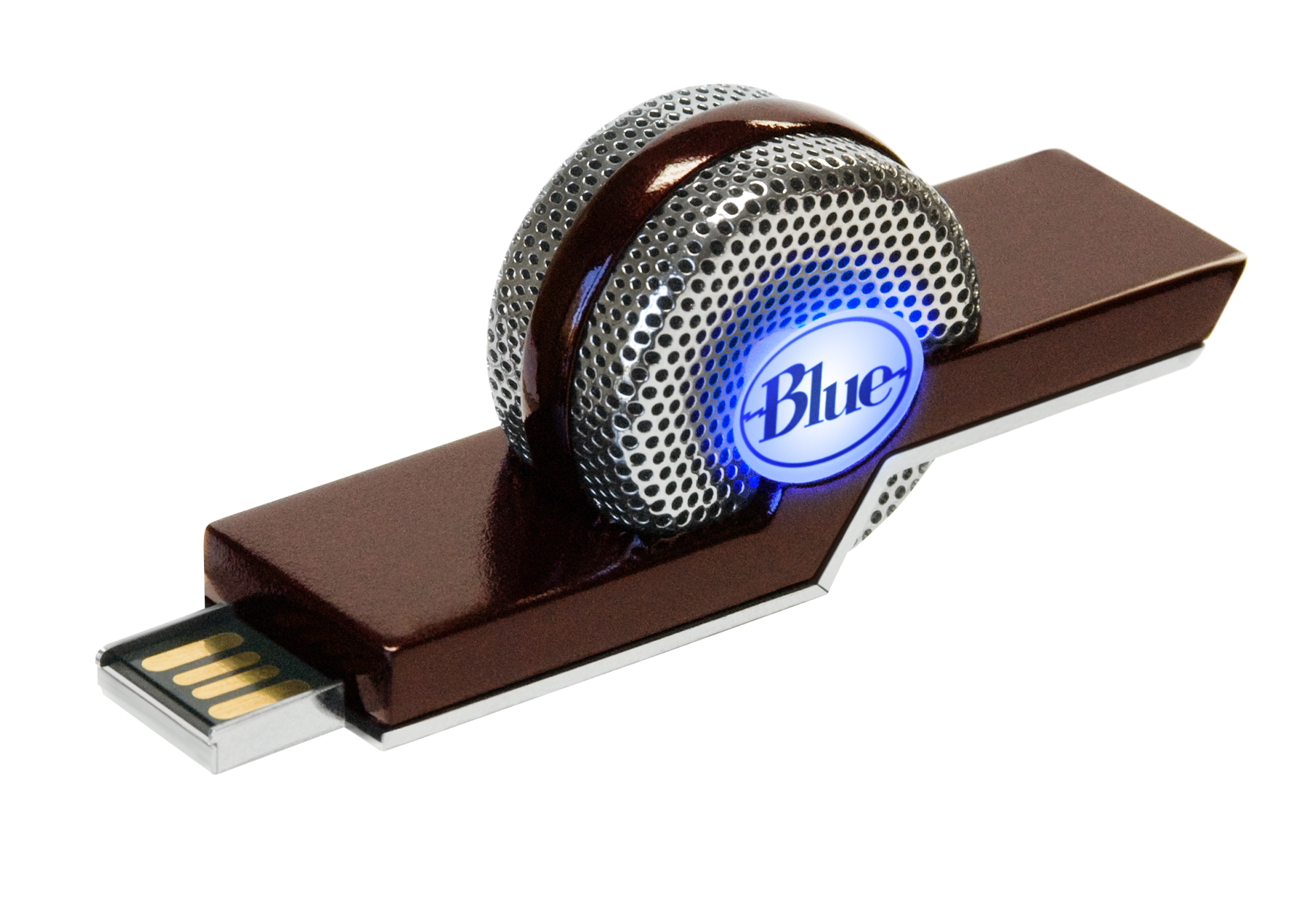
Blue Microphones is one of the better-known manufacturers of microphones. Their products often display unique personalities, from their round Snowball (an instant favorite of podcasters) to the Yeti, and now the diminutive Tiki, which in profile, sitting flat on my desk, looks like a geometric duck. That's with its back end attached, the extended docking cable trailing out of which allows you to position the Tiki up to two feet away from your computer and any noise that machine might generate. Detaching the back end reveals a USB plug that you can connect directly to a USB port.
I've been using a review unit of Blue Microphones' USB Tiki model video chat and conferencing via Skype and Google+ Hangouts. Audio quality matters; poor sound is at best an irritant and distraction in any context. When using your computer for video chat and conferencing, it is especially important to have your voice intelligible and background noise kept to a minimum. The Tiki acheives that and more.
I chat with a number of people using Skype, and teach online seminars for the VASA Project using Google+ Hangouts. As I'm on the sending end, I have to rely in part on the judgment of others in re the quality of my output in those situations. Without exception, they prefer the sound from the Tiki to the Plantronics USB headset I used to use -- it comes through clearer and richer, apparently. There's not much ambient sound in my home office, but, though it sits on my desk some 18 inches from my face, the Tiki screens out background noise when I'm speaking (my wife at her keyboard ten feet away, the furnace six feet behind me rumbling in the cold weather). When I'm not talking, it mutes itself. They call this "Intelligent Speech Mode," based on a built-in DSP chip, and it proves itself very smart indeed.
I find it more comfortable not to wear a headset for any length of time, of course. Also, in both Skype and Google+ Hangouts -- during one-on-one sessions as well as multi-party conferences -- I discovered that the Plantronics headset built up some type of static charge that wouldn't affect me hearing others, and that I wouldn't hear at all, but that would gradually drown my voice in electronic crackle on my listeners' end. Notified of this by the parties to whom I spoke each time it became obtrusive, I'd have to stop, unplug the headset, and reconnect it after ten seconds or so. That would clean the system out, but would also interrupt the flow of thought and conversation. There's no such problem with the Tiki, on which my wife and I have talked without interruption for hours, to people as far away as China.
I haven't thoroughly tested "Natural Recording Mode," the Tiki's second option, meant for acoustic solo/duo instrumental and/or vocal performances. This summer I plan to produce some podcasts and multimedia pieces involving voiceovers, and will report on this function once I've tested it for those purposes. For its $59.99 MSRP, you get a plug-and-play mic that's perfect for online chat and will get you close to professional broadcast quality for basic audio recording, especially if you do some post-production cleanup in Audacity or GarageBand. Hard to beat.
Harris also put the unit through its paces. Because he often works with his MacBook Pro or HP laptop on his lap, he found that the sound quality improved substantially when using the optional USB extension cable, which allowed him to position the unit nearer to his mouth, with less ambient noise and greater clarity. The arm of a couch was a perfect place to perch the Tiki, and it also reduced the sound of his fingers hitting keys, by providing a bit of mechanical isolation. With a set of headphones on and the Tiki plugged in, even a noisy airport lounge didn't constitute a distraction; the noise-canceling function kicked in to just the right degree. Traveling with it was a snap, due in part to the fact that, as it works off of the USB port's power supply, it never needs recharging. The Blue Microphones Tiki comes highly recommended by both of us.
A. D. Coleman, with additional reporting by Harris Fogel, posted 6/6/13
For more information on the Blue Microphones Tiki visit: www.bluemic.com
For more information on A. D. Coleman visit: www.photocritic.com
© Copyright 2013 by A. D. Coleman. All rights reserved. By permission of the author and Image/World Syndication Services, imageworld@nearbycafe.com.



